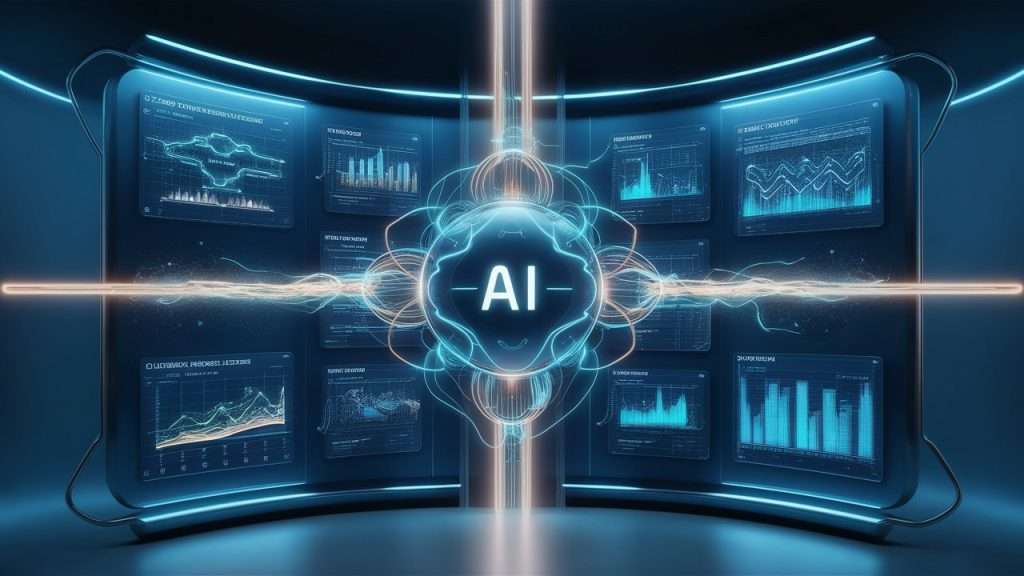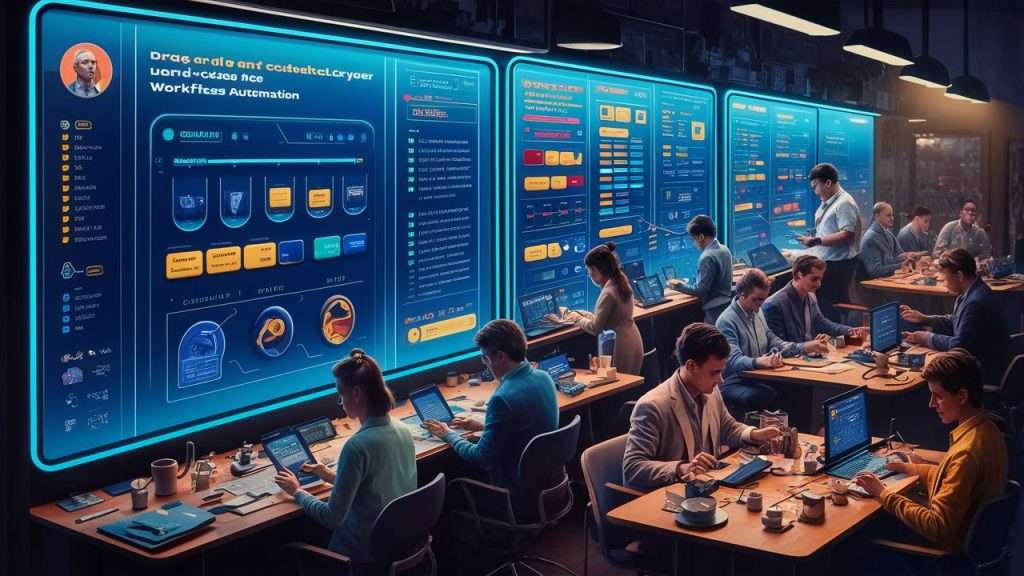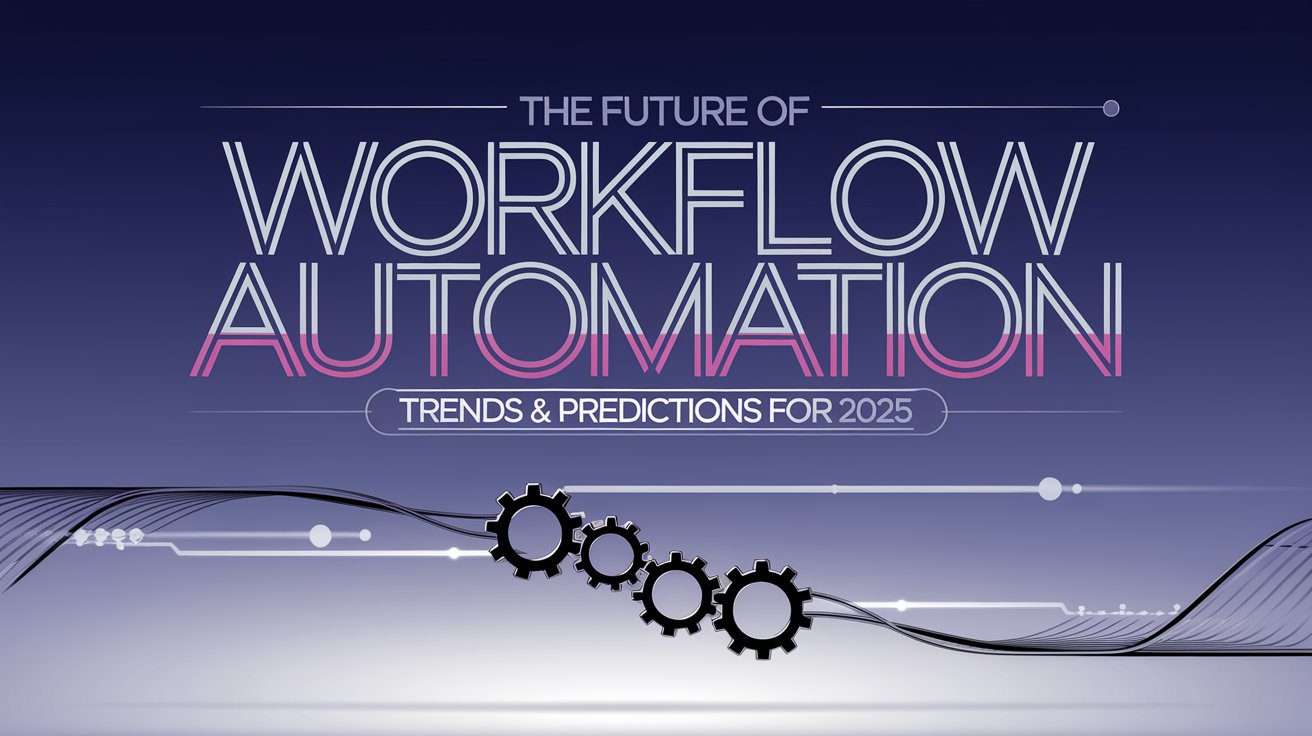As we approach 2025, workflow automation is poised to revolutionize the way businesses operate across the globe. The convergence of advanced technologies and an increasing demand for efficiency is driving organizations to rethink traditional processes. Workflow automation is no longer a luxury reserved for large corporations with vast resources, it’s becoming an essential tool for businesses of all sizes aiming to stay competitive in a rapidly evolving market. In this article, we’ll delve into the emerging trends and predictions shaping the future of Artificial Intelligence in Workflow Automation. By understanding these developments, you can position your business to embrace change, optimize operations, and drive innovation in the years ahead.
The Rise of Artificial Intelligence in Workflow Automation

AI has become the new horizon for many workflow automations and has offered features that was previously thought inconceivable. The advancement of AI is the possibility of its integration into automation systems, which makes it possible to resolve complicated processes far faster and more accurately.
AI-Powered Decision Making
There is no doubt that the application of AI in various aspects of a work process has preferred the decision-making part in a way. AI help managers with powerful tools by analyzing large volumes of data, and filtering the patterns that fit into decision making processes. This is not about raw calculations; AI is capable of making sense of raw data such as customer messages, market trends, and sentiment on the social media.
Such information helps to predict the changes in the market and to forecast the further actions in order to have competitive advantage. Think about having a recommending AI advisor that provides ideas and decisions based on the data collected – and that is the future of AI-enabled decision making.
Intelligent Process Automation
IPA is the integration of Automation and Machine learning or AI into more conventional Approaches to Automation. IPA systems can interpret natural language, recognize images and behave in a way as if it has been programmed although it has not been. This means, that routine work, such as invoice handling, compliance documents, or answering customers’ questions, can be automated easier.
For instance, an IPA system can scan the messages that come in from clients, analyze them to work out a reply, and then be able to perform tasks such as modifying records or providing confirmation. Therefore, through IPA, it is now possible for businesses to scale back the number of acts that are repetitive in nature thereby saving on time and resources and provide opportunities to the human element to focus on other activities that call for creativity and discretion.
Enhanced Predictive Maintenance
Specifically in industries like manufacturing, energy and transport the failure of some critical equipment can take a very high toll in terms of time and safety. Predictive maintenance via the use of Artificial Intelligence works with sensors that capture data of equipment health in real-time. Through math algorithms of analysis, including vibration, temperature, or performance, AI can diagnose whether a machine needs maintenance even before it fails.
This approach reduces the chance of unscheduled outages, increases the life of the equipment, and schedules the repair timings. The upshot is a lower cost and system dependability, which could make good strides in terms of earnings and customer satisfaction.
Interaction between Automation and Internet of Things (IoT)

The idea in IoT is to make available numerous objects that can extend the capability to sense, interact, and communicate without human input. The combination of the WFA with IoT provides new modes of enhancing operational effectiveness throughout different sectors of the economy.
Real-Time Data Collection and Data Analysis
IoT devices create a Li-Fi data stream from sensors installed on machines, vehicles, buildings, and even objects that can be used on a daily basis. This real-time data can be imported into automated operational processes that make corresponding responses in real-time. For instance, in the agricultural business, some moistening devices can see the need for water and thus command the automation system to switch on the sprinklers.
In retailing, smart shelves embodiments can assess levels of the products in shelves, and order for them when they are out of stock. Such responsiveness makes management to ensure that operations are efficient, resource wastage is reduced, and needs of the customers satisfied.
Supply Chain Management Integration
The complexity of supply chain is on raise day by day owing to factors like globalization, Jan time delivery expectations in the customers and the increasing tendency to look for product differentiation. It means that by connecting IoT with the automation of the chain processes, companies get full visibility and control over their supply chain.
In transit, location and condition of shipments can by supervised by means of GPS tracking devices, whereas in the delivery process, automated systems may alter the routes and times of delivery according to possible delay, climate or alteration of demand. This level of agility cuts down on overstocking and stock out costs; shortens delivery lead times; and yields timely accurate and informative delivery expectations to the customers.
Improved Energy Management
One of the most important considerations in design is energy utilization in both cost and ecological aspects. Energy utilization in the cases of different facilities can be observed through IoT devices and thus the specific inefficiencies as well as the possible potentials can be found out. The automation systems can then adapt the settings base on the time of day for instance if it is bright outside the recessed lights can be turned off and vice versa or if the rooms are empty they can turn off the AC.
In particular for business enterprises such as data centers and manufacturing plants or large offices complex these adjustments can actually result in huge energy savings. Further, sustainability can improve the brand image and also address the legal concerns to do with emissions rate.
The Growing Importance of Low-Code and No-Code Platforms

These create pressure that requires low-code and no-code platforms to deliver innovation as quickly as possible and be adaptable. These tools are bringing technology on the ground by making automation and application development possible for people who might not know how to code.
Empowering Non-Technical Staff
In the past, developing software solutions needed unique programming languages hence encountering constraints as firms waited for their IT departments to deliver applications. With the unique capability of low-code and no-code platforms, it is easy to use, offering employees friendly GUI, drag and drop besides having working templates where business employees from departments of an organization create solutions based on the specific needs they have.
For example, marketing manager develops an application to monitor the performance of campaigns, HR specialist can implement an application for training new employees. This stakeholder empowers problem solving, innovation, and to decrease reliance on scant IT assets.
Accelerating Digital Transformation
Precisely, in business, the fast creation and deployment of applications are always paramount. Low code and no code platforms bring a change in the cycle time to develop from months to weeks, or even days. This speed allows the business to produce and deliver solutions to market changes, customer needs or operational issues.
For example, during the change in market conditions, the company can quickly design a customer feedback tool or optimize some internal business processes for remote work. These platforms are fundamental to keeping up with and supporting change in digital development initiatives through the elimination of restrictive factors.
Cost-Effective Solutions
Reduced capital later deters a company from funding new technologies. The use of low code and no code platforms has been proved to be cheaper than the development of traditional software. They eliminate the headache of hiring experienced developers, they are cheap to maintain, and are easily scalable. This makes a high level of automation affordable to small and middle-sized companies, which can compete with large companies. This is due to the fact that resources are effectively fixed and its correct allocation means that businesses get to focus on other vital aspects for instance, marketing, research or customer service.
Enhanced Focus on Security and Compliance

Since the tendency of dividing numerous work flows and automating them is increasing, the protection and managing of these systems is the main focus. Traditional threats are shifting to a cyber domain, and the rules of the game among countries are changing. Security needs to be built in as a strong force as that is what will ensure that the organizations protect their data from malicious users.
Implementing Robust Security Measures
Automated work flows most of the time work with sensitive information for instance; personal details, fiscal reports or other commercial and personal secrets. This makes them suitable candidates to be targets of cyber criminals. This data must be protected and to achieve this there must be strong security measures in place. This features in the form of encryption, secure authentication, intrusion detection, and normal security check-ups. Moreover, the following measures may improve security as well.
Entering a zero-trust architectural approach under which no user or device is considered secure by default. By proactively managing security, businesses can prevent breaches that could lead to financial losses, legal liabilities, and reputational damage.
Ensuring Regulatory Compliance
Under no circumstance is non-adherence to data protection regulations such as General Data Protection Regulation (GDPR), Health Insurance Portability and Accountability Act (HIPAA) or as per the industry of the business. It must be recalled that compliance is a primary consideration for any automation system whether through data anonymization, consent, or record-keeping. That not only saves money from possible penalties and legal issues but also strengthens customers’ confidence with rising use of their data. , pursuit of compliance means constant observation, because regulations may evolve, and new ones may appear.
Promoting Ethical Use of Automation
The use of the concept of ethics is explained based on the current topics concerning the different areas of application of automation such as unemployment, privacy, and algorithmic bias. Automate must be done in a manner that it elevates human effort and not a way that it dismisses the role of human beings in organizations.
It entails offering training and other resources to employees to be ready for new organizational roles or responsibilities, offering effects control to ensure that data usage is fair and free from prejudice including coming up with techniques that can help check unfair decisions made by the computers. Supporting ethical practices the corporation can build an effective ethical climate, strengthen its identity, and minimize undesirable consequences from the side of shareholders or consumers.
Summary
The vision for workflow automation in 2025 includes key trends including artificial intelligence and Internet of things, the increased availability of low-code platforms for development, and the increasing focus on security and sustainability. These tell of new trends that are recasting the business landscape newly affording opportunities to enhance the efficiency, flexibility as well as competitiveness of business processes.
New technologies give organizations the opportunity to modernize their processes via AI-supported decision making, IoT-based real-time response, widely available tools for non-IT staff, and focus on security and compliance they will be ready for continually growing automation. It is important to evaluate how these evolutions can be put to use in your company, in order to pursue innovation, offer outstanding customer services, and guarantee long-term success.

